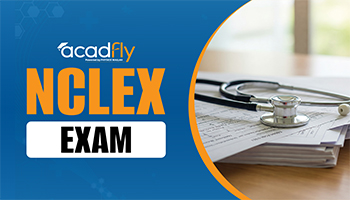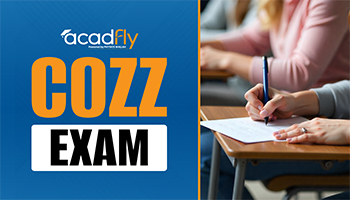

Best Intakes to Study in Australia for Indian Students: Australia is a top destination for students wishing to study abroad due to its high-quality education system, diverse cultural environment, and excellent career opportunities. For Indian students considering study in Australia, understanding the best intakes is crucial for planning and ensuring a smooth admission process.
This article provides a comprehensive guide on the Best Intakes to Study in Australia for Indian Students, covering the benefits, application timelines, and the specific intakes for various courses and universities.

Why Study in Australia?
High-Quality Education
Australia is home to some of the world’s top universities, renowned for their academic rigor and innovative teaching methods. Studying in Australia ensures that students receive a globally recognized degree, which opens doors to numerous career opportunities worldwide. The curriculum is designed to equip students with the knowledge and skills required to excel in their chosen fields.
Multicultural Environment
Australia's diverse and inclusive society makes it an ideal place for international students to study abroad. The multicultural environment enhances the learning experience and helps students build a global network. This exposure to various cultures and perspectives is invaluable in today’s globalized world, promoting cultural exchange and understanding.
Excellent Career Opportunities
Graduates from Australian universities are highly sought after by employers in various sectors, including technology, business, healthcare, engineering, and more. The practical skills and knowledge acquired during the program prepare students for leadership roles and specialized positions in their chosen fields. Australia’s strong economy and connections to the Asia-Pacific region also offer numerous career opportunities.
Best Intakes to Study in Australia for Indian Students
Understanding the different intakes available can help Indian students plan their applications effectively. The main intakes for Australian universities are:
-
Semester 1 (February/March)
-
Semester 2 (July)
-
Summer Intake (November)
Each intake has its advantages and is suitable for different types of courses and student needs.
Semester 1 (February/March)
Overview
The February/March intake, also known as Semester 1, is the primary intake for most universities in Australia. It offers the most extensive range of courses and is the preferred intake for many international students.
Benefits
-
Wide Range of Courses: Most programs, including undergraduate and postgraduate degrees, are available during this intake.
-
Orientation Programs: Extensive orientation programs help new students settle into university life, offering support and guidance.
-
Better Accommodation Options: As the primary intake, students have better chances of securing on-campus accommodation and other housing options.
|
Application Timeline |
|
|
Activity |
Timeframe |
|
Application Deadline |
September - November (previous year) |
|
Offer Letters Issued |
November - December |
|
Visa Application |
December - January |
|
Semester Starts |
February - March |
Detailed Steps for Application
-
Research and Choose Courses: Start by researching the universities and courses that interest you. Consider factors like course content, faculty, location, and career opportunities.
-
Prepare Application Documents: Gather all necessary documents, including academic transcripts, English proficiency test scores (IELTS/TOEFL), letters of recommendation, and a statement of purpose.
-
Submit Applications: Apply to the selected universities before the deadline. Ensure that your application is complete and error-free.
-
Receive Offer Letters: If your application is successful, you will receive an offer letter from the university. This usually happens between November and December.
-
Apply for Visa: Once you have accepted an offer, start the visa application process. Ensure that you have all required documents, including proof of financial support.
-
Prepare for Departure: Plan your travel and accommodation. Attend pre-departure sessions organized by universities or student organizations.
Semester 2 (July)
Overview
The July intake, or Semester 2, is the second most popular intake for international students. While fewer courses are available compared to Semester 1, it still offers a wide range of programs.
Benefits
-
Less Competition: With fewer applicants, students may find it easier to secure admission and accommodation.
-
Mid-Year Start: Ideal for students who need more time to prepare their applications or who are finishing other commitments.
-
More Flexible Timeline: If you miss the February/March intake, the July intake provides another opportunity to start your studies without waiting for a full year.
|
Application Timeline |
|
|
Activity |
Timeframe |
|
Application Deadline |
March - May |
|
Offer Letters Issued |
May - June |
|
Visa Application |
June - July |
|
Semester Starts |
July |
Detailed Steps for Application
-
Research and Choose Courses: Identify the courses and universities that accept applications for the July intake. Review their requirements and deadlines.
-
Prepare Application Documents: Collect necessary documents, such as academic records, English proficiency test scores, recommendation letters, and personal statements.
-
Submit Applications: Apply to your chosen universities before the deadline. Double-check that all information and documents are accurate.
-
Receive Offer Letters: After submitting your application, universities will review your credentials and send offer letters if you are accepted.
-
Apply for Visa: Begin the visa application process immediately after accepting an offer. Make sure to meet all the visa requirements.
-
Prepare for Departure: Organize your travel plans, secure accommodation, and attend pre-departure orientation sessions if available.
Summer Intake (November)
Overview
The November intake, or Summer Intake, is less common but available for specific courses, especially short-term and vocational programs. It’s an excellent option for students looking to start their studies later in the year.
Benefits
-
Flexible Start Dates: Ideal for students who missed the earlier intakes or those seeking short-term courses.
-
Focused Attention: Smaller class sizes may provide more personalized attention from instructors, enhancing the learning experience.
-
Opportunity for Gap Year Students: Students who have taken a gap year or are looking to change their field of study can benefit from this intake.
|
Application Timeline |
|
|
Activity |
Timeframe |
|
Application Deadline |
August - October |
|
Offer Letters Issued |
October - November |
|
Visa Application |
October - November |
|
Semester Starts |
November |
Detailed Steps for Application
-
Research and Choose Courses: Look for courses and universities that offer a November intake. Check their specific requirements and deadlines.
-
Prepare Application Documents: Gather all required documents, including academic transcripts, English proficiency test scores, recommendation letters, and personal statements.
-
Submit Applications: Apply to the chosen universities well before the deadline to avoid any last-minute issues.
-
Receive Offer Letters: If accepted, you will receive offer letters from the universities. Respond promptly to secure your spot.
-
Apply for Visa: Start the visa application process as soon as you accept an offer. Ensure that all documents are in order.
-
Prepare for Departure: Arrange your travel, finalize accommodation plans, and participate in any pre-departure activities offered by the university.
Choosing the Best Intake
Choosing the Best Intakes to Study in Australia for Indian Students depends on various factors, including the course of study, personal preferences, and readiness to apply. Here are some tips to help make the decision:
-
Course Availability: Check which intakes offer your desired course. Some programs may only be available during specific intakes.
-
Preparation Time: Ensure you have enough time to prepare your application, gather documents, and apply for a visa. Rushing the process can lead to mistakes.
-
Financial Planning: Consider your financial situation and plan accordingly for tuition fees and living expenses. Different intakes might have varying costs associated with them.
-
Career Goals: Align the intake with your career goals and any professional or personal commitments you may have. Consider how the timing of the intake fits into your broader career plans.
-
University Deadlines: Each university has its own deadlines and requirements. Make sure to stay informed about the specific timelines for the universities you are interested in.
Conclusion
Choosing the Best Intakes to Study in Australia for Indian Students is crucial for a smooth and successful study abroad experience. Each intake offers unique advantages, and selecting the right one can significantly impact your academic journey and career prospects. For personalized guidance and support, AcadFly provides comprehensive assistance with university selection, application processes, visa applications, and career counselling. AcadFly ensures that your path to studying and living in Australia is smooth and successful.
Frequently Asked Questions
1. What are the main intakes to study in Australia?
2. Which intake is best for Indian students to study in Australia?
3. How can I apply for the February/March intake in Australia?
4. How can AcadFly assist in studying in Australia?









